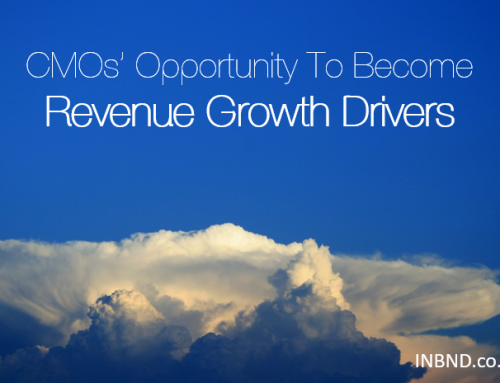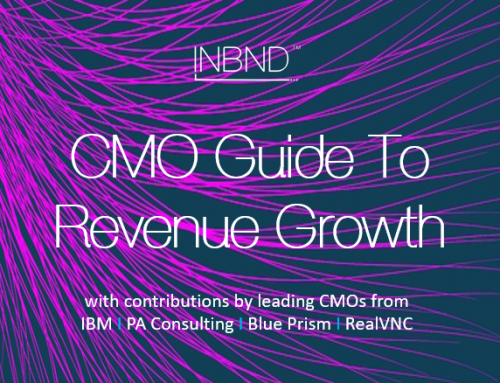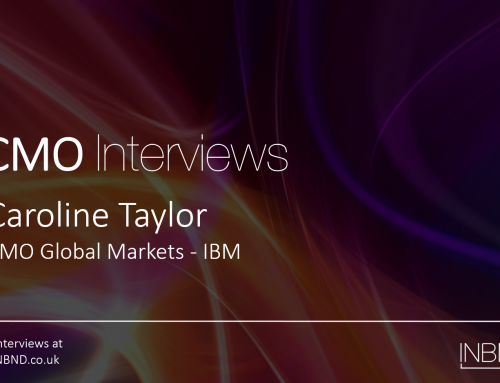Never has it been more important – and possible – for Marketing and Sales teams to be more aligned. Doing so will have a direct impact on a company’s bottom line. Neither function can exist in isolation, and having worked on both teams over the course of 19 years I am sharing my view on what each team can learn from the other. The counter-view of what Sales can learn from Marketing is available here.
This is what Marketing can learn from Sales:
1. Understand business conversations and their context
Marketers are masters at creating good messaging that reflects the company’s products and solutions in the best possible way. Much time and money has been spent honing the way products and solutions are best shown off to the audience. The aim is to create desire and aspiration. But what if all that work misses the points that are most salient to the buyer? If marketing spent the same amount of time understanding the business conversations and context the sales people have every day, there is no doubt that marketing messaging will improve. Marketing simply cannot afford not to be aligned with their Sales counterparts, especially now that Marketing activity can be measured and evaluated at a very deep level. If you don’t already have meetings at management level, arrange them now. Weekly, bi-weekly, monthly, onsite, offsite – whichever works best for you. But do it now, be open, honest and leave the egos at the door.
2. Understand verticals
If you take the previous point a step further, Marketers will move towards better understanding target verticals. If your company is targeting a variety of verticals, say, life sciences, IT and Accounting companies then your marketing language should reflect a deep understanding of each of these verticals. One message will not fit all, you will need to adapt the benefits and nature of your solutions and products to address the needs of the target vertical. You may not think it, but any product description can vary greatly depending on what the target vertical is. Adapting it is worth the time and effort. If your messaging is too generic, you may miss out on reaching any vertical sufficiently. If you don’t believe this is true, just spend a couple of hours shadowing one or more good sales people targeting different verticals. You will soon see how they use different approaches and language for each of them.
3. Target specific accounts
Ok, so you have mastered the business conversation, context and verticals that your company is targeting. The next step Sales would take, which Marketing should also adopt, is to target individual accounts. Imagine taking everything you have applied in the previous three points, but now you have a targeted conversation with multiple contacts in the same account/company. How much more will you find out from these conversations? You will not only be able to adjust to idiosyncrasies for each individual account, but as a result you will also find target prospects much more open to entering a dialogue. Sales people do this naturally, because it leads them towards the deal and decision-maker they are targeting. With today’s marketing, automation and analytics tools it is possible to be tactical to this degree. It will resonate more than any well-crafted, but generic message. It also has the benefit and opportunity for referrals and cross-promotion. It can even go as far as creating larger opportunities by combining interest from multiple buyers within the same target account. In practical terms you may wish to run targeted email campaigns, advertising or physical events aimed at specific target accounts – be that for client accounts or new logos. Using in-depth analytics and automation tools will form the glue to hold your communications strategy together.
4. Work with sales, they make you look good
If the above three points haven’t already made it obvious that it is a good idea to align with and learn from Sales, consider this: It is Sales that will make Marketing look good. Marketing doesn’t close deals, Sales does. Both teams need to rely on each other to be successful. There is only one way to be more successful than another company’s sales/marketing combo and that is by collaborating and being better aligned – even if you are up against competition with a more advanced product or solution. Want to know why? See my next point.
5. People buy from People
In most cases people buy from people. If you were to investigate the abilities of the most successful Sale people, one of the key things you would find is the ability to create good rapport and personal relationships. By default, and the sheer size of the audience, Marketers can find this point difficult to achieve. This is especially the case if there is no brand personality. The way you can succeed in giving your brand a personality is by either having a figure head that stands out above the brand – think Steve Jobs or Richard Branson, or you define a brand identity and tailor your brand language accordingly. Examples for this are Innocent Smoothies or Rackspace. While it takes time to achieve this point, it is also amongst one of the most valuable. All of the largest companies aim to succeed in this, which is also why celebrity endorsement is so widely spread – and ultimately why celebrities get dropped as soon as they mis-step in their personal lived. Brand equity and goodwill associated with the brand’s identity are the life-blood of any brand.
6. Be found everywhere – directly or indirectly
Let’s take a look at a group of great Sales people. They will all have one point in common, they will be visible everywhere. They will spend most of their time out of the office, meeting prospects and connecting with new contacts. They will be masters at forging new and meaningful relationships, gaining trust, reverence and extending their personal network through introductions, referrals and proactive outreach. The old adage holds true – for every minute your prospect talks to you, they can’t talk to your competitors. If you transfer this to Marketing, it means you have to be found wherever your audience is searching for something that your company sells. By leaving a trail of content and being visible (and findable) on search engines you will make it easier and more likely for your target audience to spend time viewing information from and about you, instead of that from competitors. Going back to the point of ‘gaining trust’, it is important that the content you create is not just a pitch, but will also foster trust and credibility. Insight is better than product features, remark-able content is better than generic info. When I say remark-able (with a hyphen), I mean it has to have something worth remarking on. That increased the likelihood of being shared on social media and amongst peers, which in turn reaches a wider audience (for free) than you would have previous been able to reach. All of this contributes to inbound marketing. And inbound marketing is more profitable and effective than outbound marketing.
7. Be the first through the door
In times where 65% of prospects self-educate before engaging Sales, a good sales person will benefit from being through the door of a potential customer as early as possible. This allows them to influence opinion, requirements and perception of the solution or product the Sales person is trying to sell. Wait and you will likely be amongst the long-tail of people who try and play catch-up. The above mentioned trail of content is important in order to be found, but Marketing can’t leave everything up to good fortune and Google rankings. Much like a great Sales person can’t rely only on referrals. A degree of pro-activeness is required to identify and reach new prospects. Steve Jobs and Apple were masters at creating a market from people that didn’t even know they wanted an iProduct. Good Marketers should also be adept at being visible to prospects at an early stage. They may still self-educate, but you may find that they use your product or solution to benchmark.
8. Target architects first, not interior designers
Let’s assume you have followed all the advice above and you’re through the door early on. Great, well done. But everything will fall down if you talk to the wrong person. Let’s use an example: A great sales person selling tiles would never wait for a building project to finish and then go and speak to the interior designer. They would engage the architect, who likely will be either responsible for the customization-offering for all apartments, or at least be able to make an introduction to the interior designer at a stage much earlier than build-completion. If the architect is the influencer or champion, and the interior designer is the business user, then the apartment owner is the decision-maker. Can you say that your marketing addresses the influencer and the business user? If it does, would you agree that your marketing has an impact reducing the number of options available to the decision-maker? Using this approach can only increase the effectiveness of the marketing activity you have already aimed at your direct target (the buyer).
9. Concentrate on the best leads
Effectively, most of the points above have analysed how a great Sales person targets their deals and how a great Marketer can do the same. Let’s say your marketing can identify a good and broad selection of suitable prospects, do you have any processes in place to rate or score the best of the best? Perhaps those who are most eager to buy, or those who have most budget to spend? In short, do you have a lead scoring process in place that is based on a solid lead nurturing process? Sales people will intuitively prioritise the lowest hanging fruit and keep close to big-budget deals that are still some way off. Marketers need to have processes in place to do the same. This will allow you to provide your Sales team with more and better qualified leads that will have a short and long-term impact on the company’s bottom line. I’m not saying you should only have a highly-targeted and short-term approach, but instead that you need a targeted AND a wide-angle approach. The latter will feed the top of the funnel, while the former will feed the bottom of the funnel. If you want more info on this, read my post about Profitable Lead Generation Strategies.
Conclusion:
Whether you are a Marketer or a Sales person, you both bring tremendous value, insight and skills to the company. Combined you will be more than the sum of your parts and your common cause will flourish. Let me be the one to tell you that other companies are already aligned between Sales and Marketing. If yours is not, you need to. There is no question and no option. Competition is only going to increase and unfortunately we are a long way off from operating in a gold-rush economy.
As a first step, you may want to begin aligning by sharing this post (or the counter-view of What Sales can learn from Marketing) with your peers and counter parts. If they understand where your focus lies you have made the first step towards being more closely aligned. Good luck.











Leave A Comment